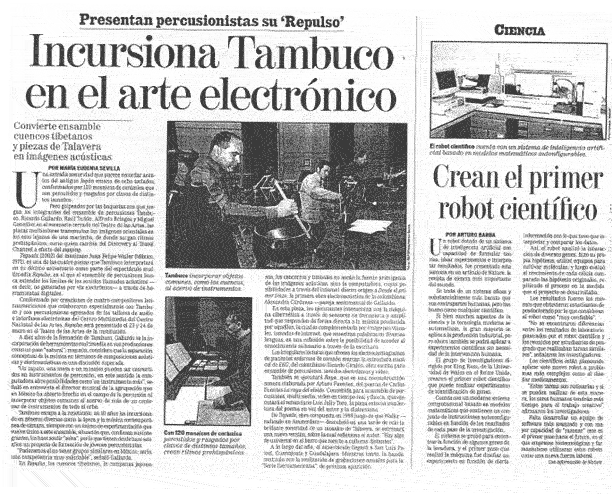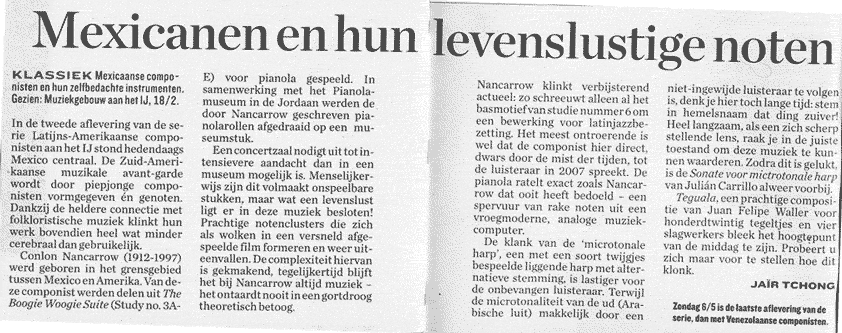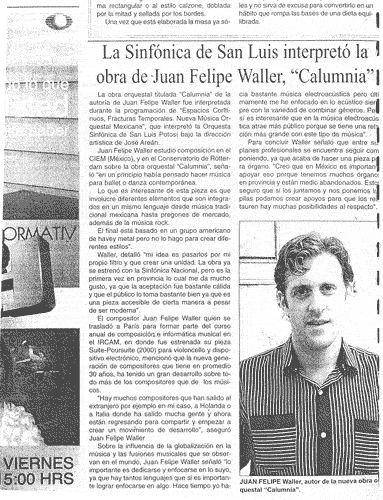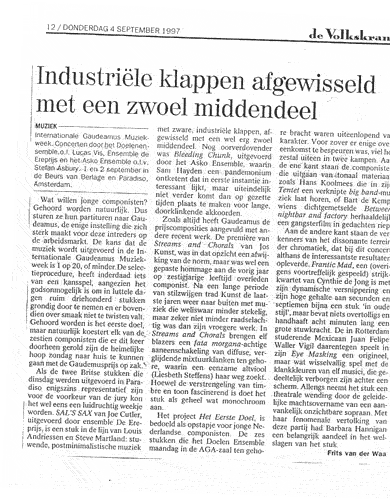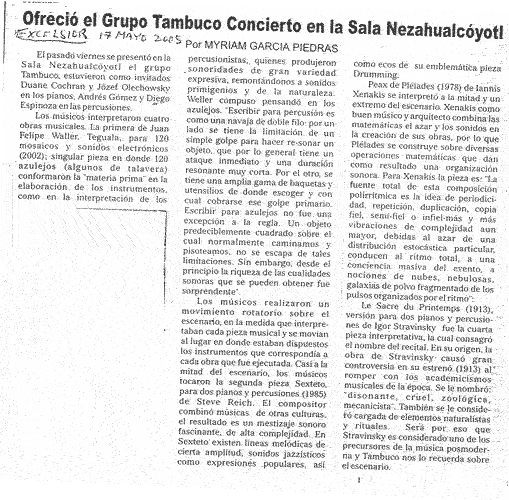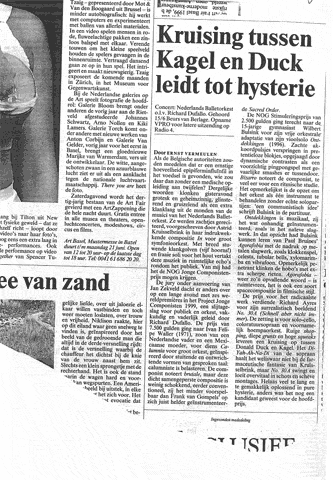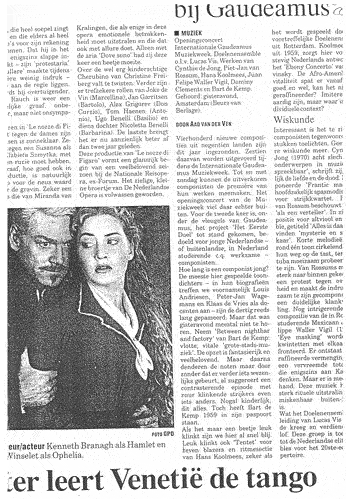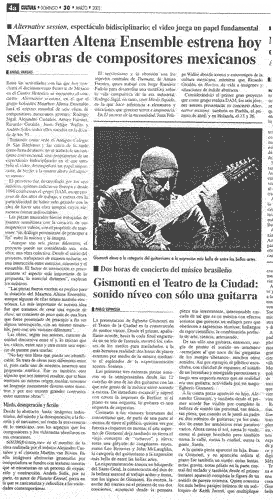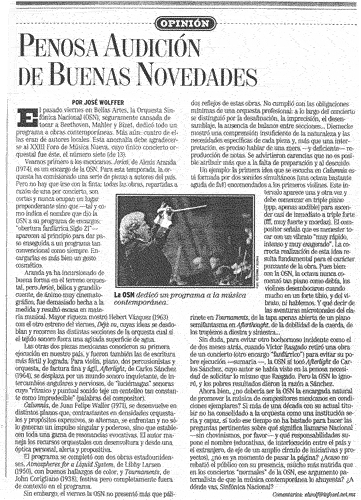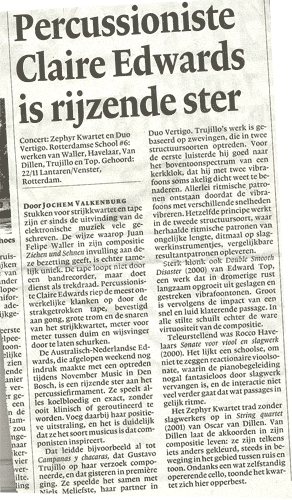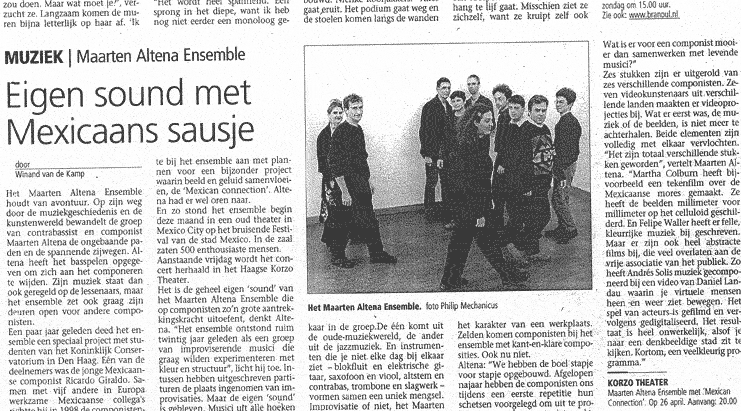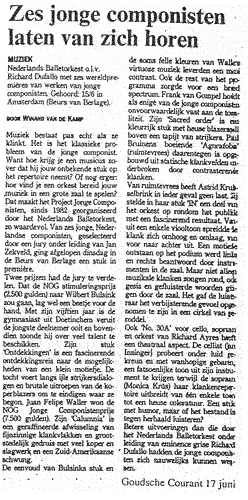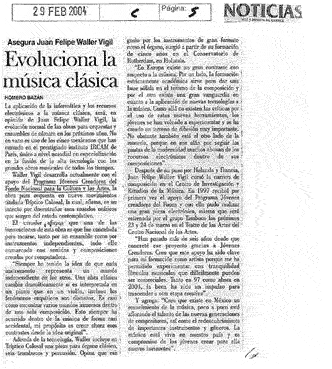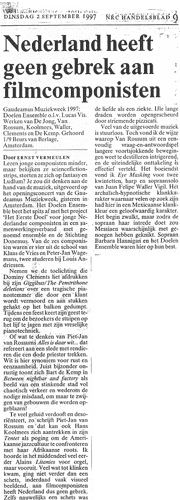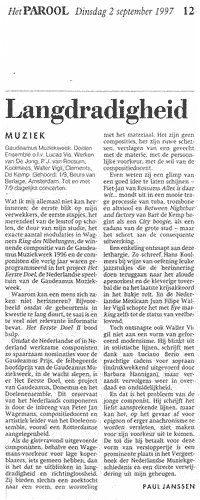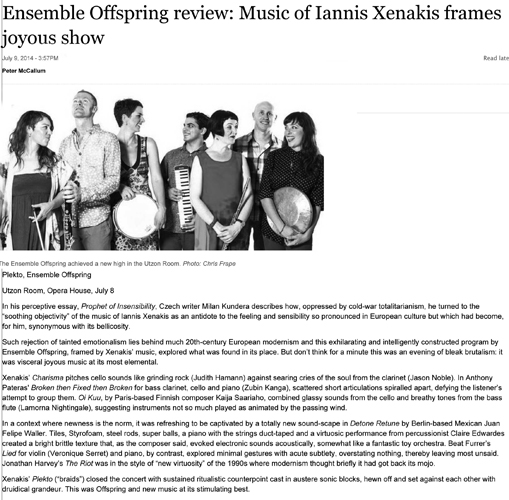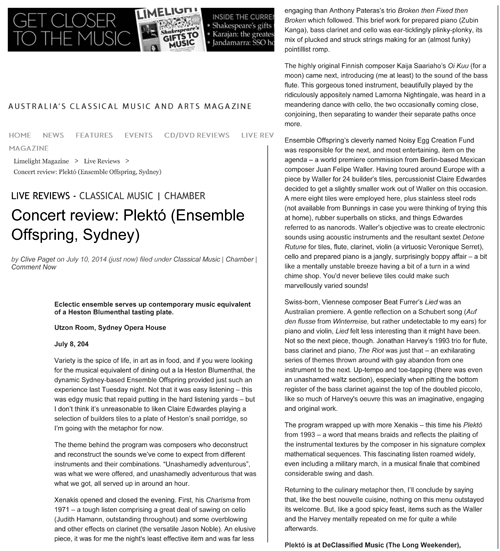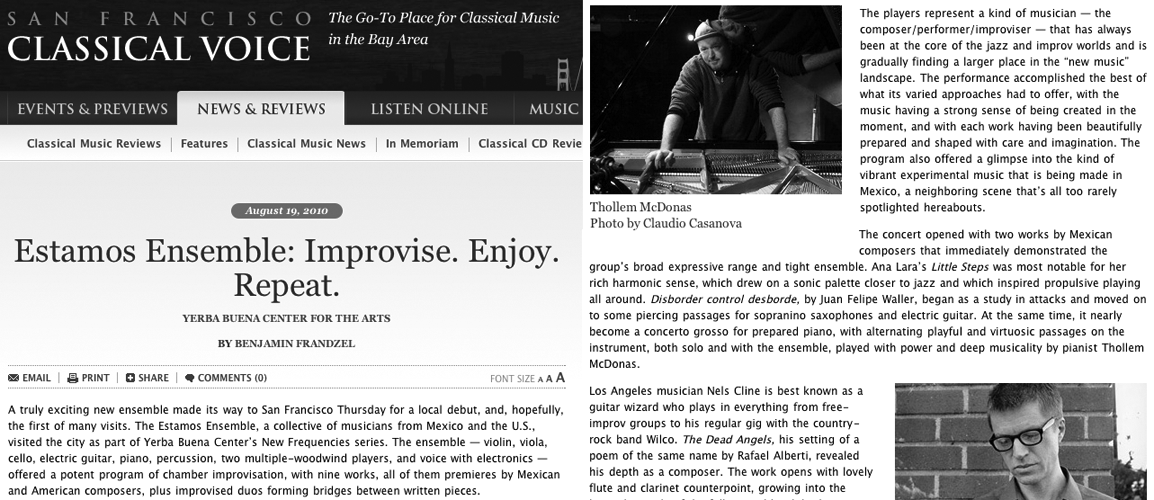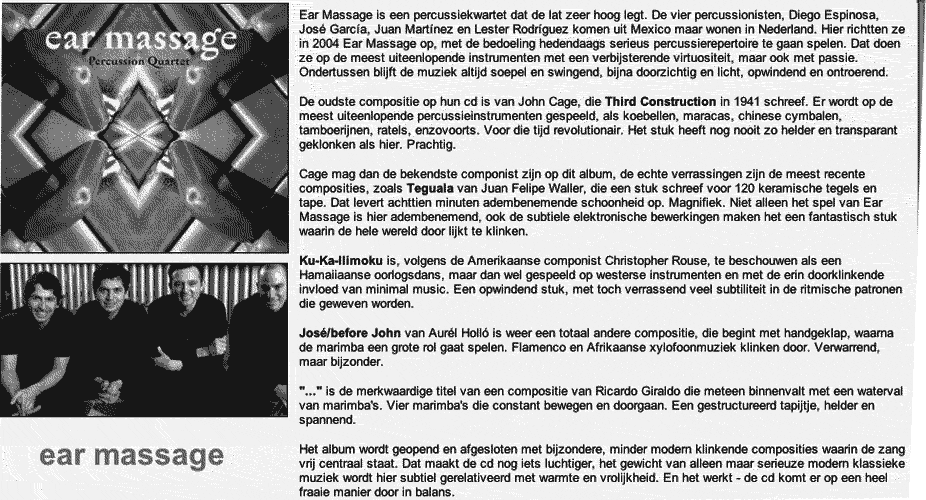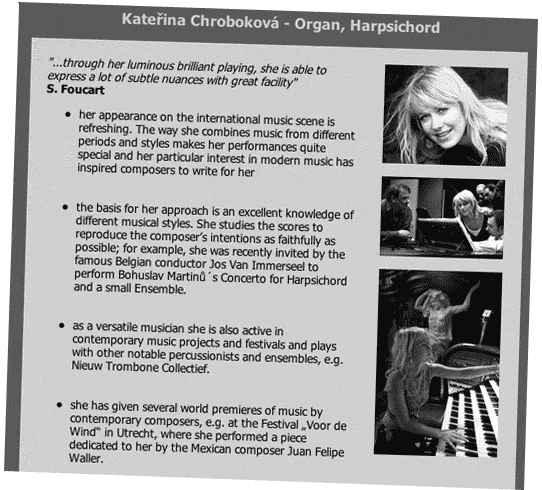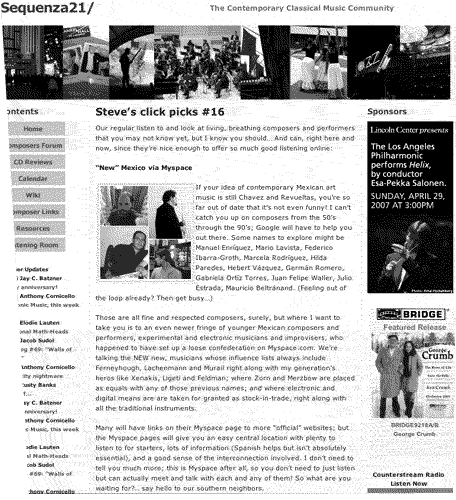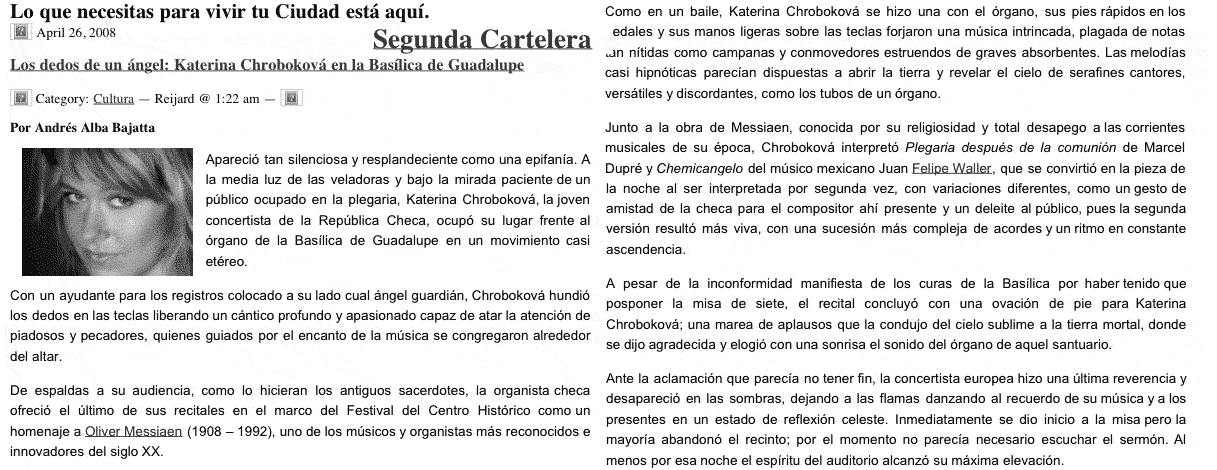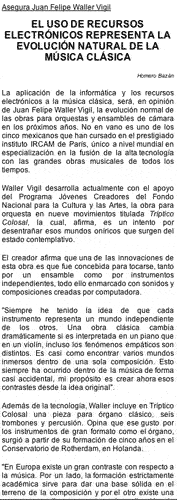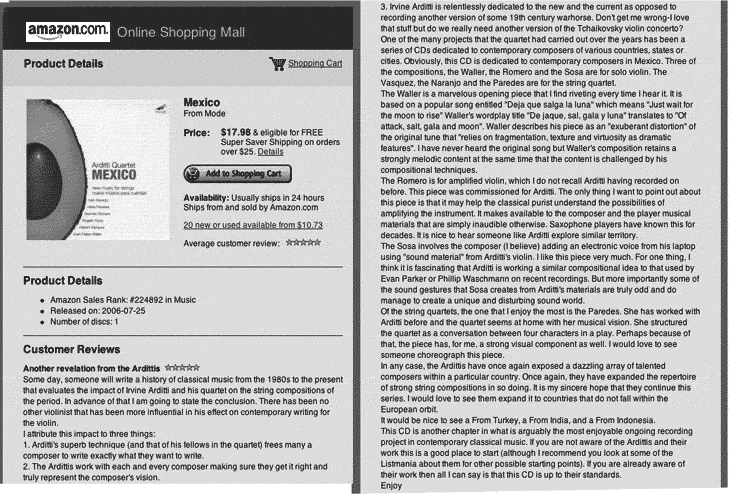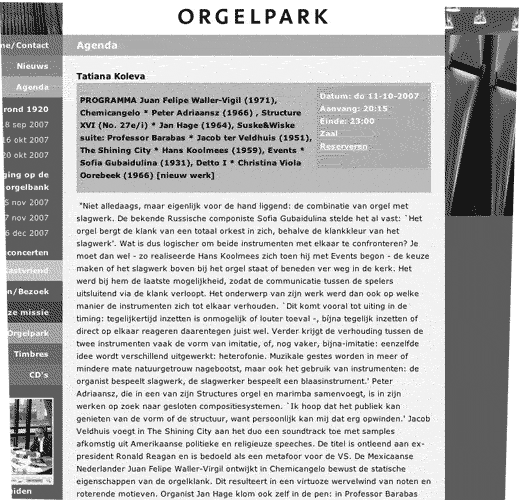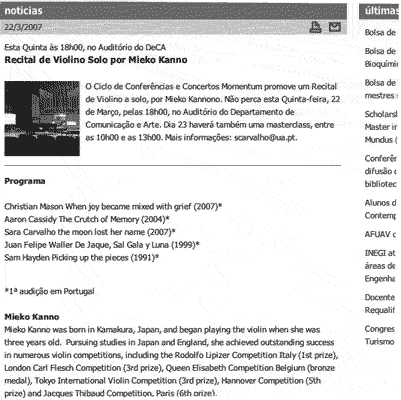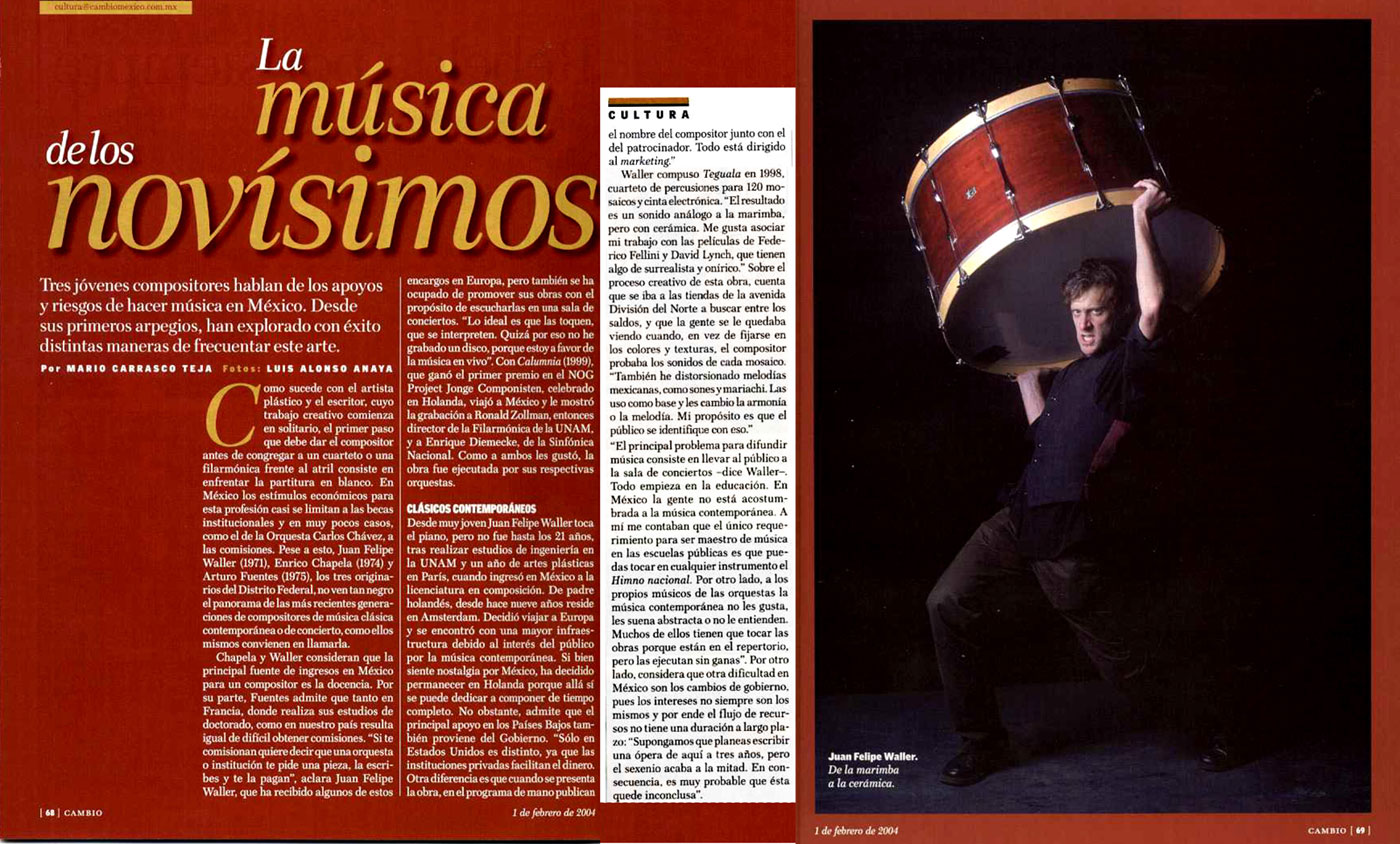Drag them like a map.
Drag them like a map.
Drag image like a map.
INTERVIEW BY GREGOR POMPE, BEFORE ITS PREMIERE IN LJUBLJANA, March 2009.
G.P.- Your composition Raganella Elettrizzante is a kind of a concert for ratchet and ensemble. Why did you choose ratchet?
F.W. Even though I don't like to listen to bad or boring concerts, I must admit they are very important in my own creative processes. The idea of using a ratchet came precisely during an extremely boring laptop concert. I have no doubt many people agree with me that a laptop concert can be one of the most dreadful experiences, especially if the music is also bad. But even when the music is ok, I still have a problem with 'performers' who look like they are checking emails while the public just stares at them accusingly. During this concert I was imagining what kind of objects could be used to give the performer of electronics, some credibility. In the last couple of years computer musicians have been using, among other wireless interfaces, the Wii controler as a way to get rid of the sitting guy. But until now I have only seen idiotic choreographies (by musicians!) waving their hands thru the air. They look like frustrated directors. So among the ideas I had, the ratchet came as the most immediate for different reasons: because it has a relation to my culture, because it's loud, but also because it has a long history and it is one of the most simple but yet effective piece of mechanical objects existing. It's all made of wood! Not even metal is necessary. More than often the simple ideas are the most efficient. So basically I put myself the task of giving this marvelous instrument a chance by extending its possibilities and using it as a controller for electronics. I find the paradox of a having such an archaic and almost primitive instrument combined with very modern technology fascinating. It could come out from a David Cronengerg film.
G.P.- You remodeled ratchet a little bit for this piece. How and why?
F.W. Well yes, I remodeled it in three ways:
1) The first is just by adding a second handle to it. Normally you have just one handle, and can only swing the ratchet around. I added a second handle on the opposite side in a contrary & reversed angle, so that 2 axis take place during the rotation. This is simply to be able to use your other hand to create leverage and thus control rhythms with precision. In my piece, there are 5 players using these ratchets simultaenously.
2) Secondly i have attached soft foam to one of the flange's side. A sort of mute, to give a difference in dynamics. In this way, depending which side one rotates the ratchet one can get either a forstissimo or pianissimo. Nothing possible in between.
3) The third modification as I mentioned before is the possibility to use the ratchet as a midi contoller. An AA battery powered circuit is added to the ratchet along with some switches, to detect the ratchet's loud clacks. For this piece I have only one Midiratchet, which is used by the soloist.
G.P.- What is actually Midiratchet?
F.W. It is just a normal ratchet with the capabilaty to detect each of the loud clacks. So eachtime the wooden flange hits the cogwheel, a signal is detected and sent to the computer. Thanks to the Arduino BT, it is possible to do it wireless (with bluetooth), otherwise if I had to rotate continoulsy the thing using cables would be a nightmare. The signals sent to the computer by this circuit are then transformed into data which can either trigger samples, sound processing, or even images. The idea that i can also trigger images is for me quite important, because it is one ideal way to synchronize sound and image.
In the past I have written a lot of music to be played live for experimental films, which led into doing some animation myself with super8, etc. With this device I trigger images in the same way animation is used, thus every hit from the ratchet triggers a frame from a film made with a stop-motion technique. This inevitably leads to the ratchet player to becoming a sort of film projectionist, but screening the speed and rhythm at will.
G.P.- Does the sound of a ratchet serve also a s a kind of structural matrix for your piece?
F.W. Well, in a way it does, somehow it goes from acoustic textural - to solo - to weird electrified.
Something like Pinoccio becomes Terminator. The piece is written with several musical 'episodes' happening in the ensemble. I must say it needs maybe a couple more episodes where the ensamble sounds really become more noisy and woody, merging more with noise textures. but that will have to happen only when I revise the piece. For the moment, I had to figure out how to integrate the midi ratchet and it's into the context of the concerto.
For the moment I use a lot of guitar samples, but I will later explore more the possibilities. Even though this piece has a head an a tail and some organs, it is still a work in process.
G.P.- Is ratchet a neglected instrument? How does ratchet merge with traditional instruments?
F.W. I wouldnt say so. it has been used pretty much in early 20th century orchestral music, and later in operas or chamber music the likes of B.A. Zimmerman, de Vries, etc. It is evidently very loud, and also a very limited instrument, but it always depends not only on the sound of it, but the context one places something within a piece. In this case, I had to be radical and use block-structure for the piece specially in the first part.
G.P.- Should we search in this piece for something Mexican?
F.W. Well, I think so. There's a bit of parody in the piece for example a solo for ratchet and piano accompanying. Or also some fiery passages, with 'false' or out of tune harmonies. And maybe just the absurdity of it all, of the soloist put in such position, and all he has to show off himself is this annoyingly loud and quite limited artifact. How can he subsist this situation. I think mexicans have an aproach to survival with a touch of humour and street-ingeniousity. The soloist is also from Mexico by the way.
G.P.- What are your plans at the time? composing some new piece, some new midiinstrument?
F.W. At the moment, I am writing a piece for percussion and electronics, for the trio Electronic Hammer, where very player will have a Midiratchet. But the bigger project at the moment is a chamber opera comissioned in Mexico, where I will certainly use the midi-ratchet as a musical 'prop' and have video and images projected while the singers and musicians are playing.
In the future, together with Bas, we want to make some kind of a giant midi controler. Imagine a human-size mixer, where the buttons have to be turned using of a strong body force, by either musicians, dancers, or even better by weight lifters, which can only change parameters in electronics using a lot of physical force, with a big effort. By the way, this was another idea I had, on the same night of the boring laptop concert.
